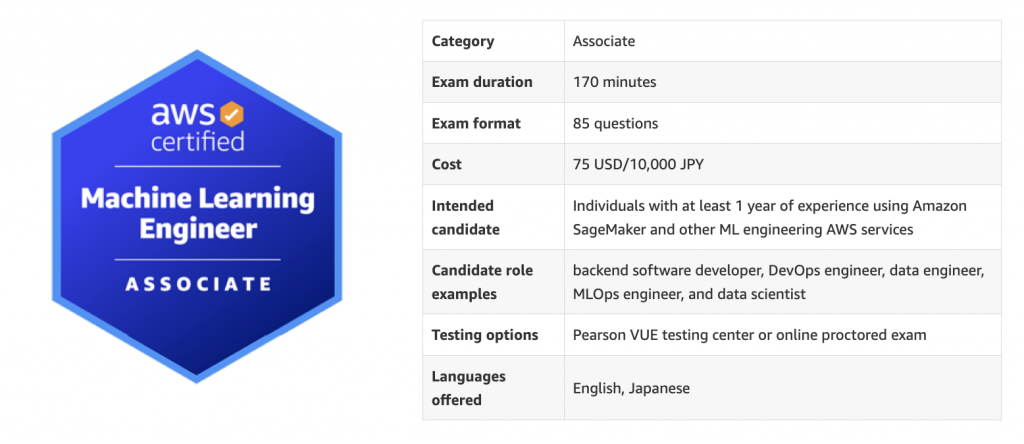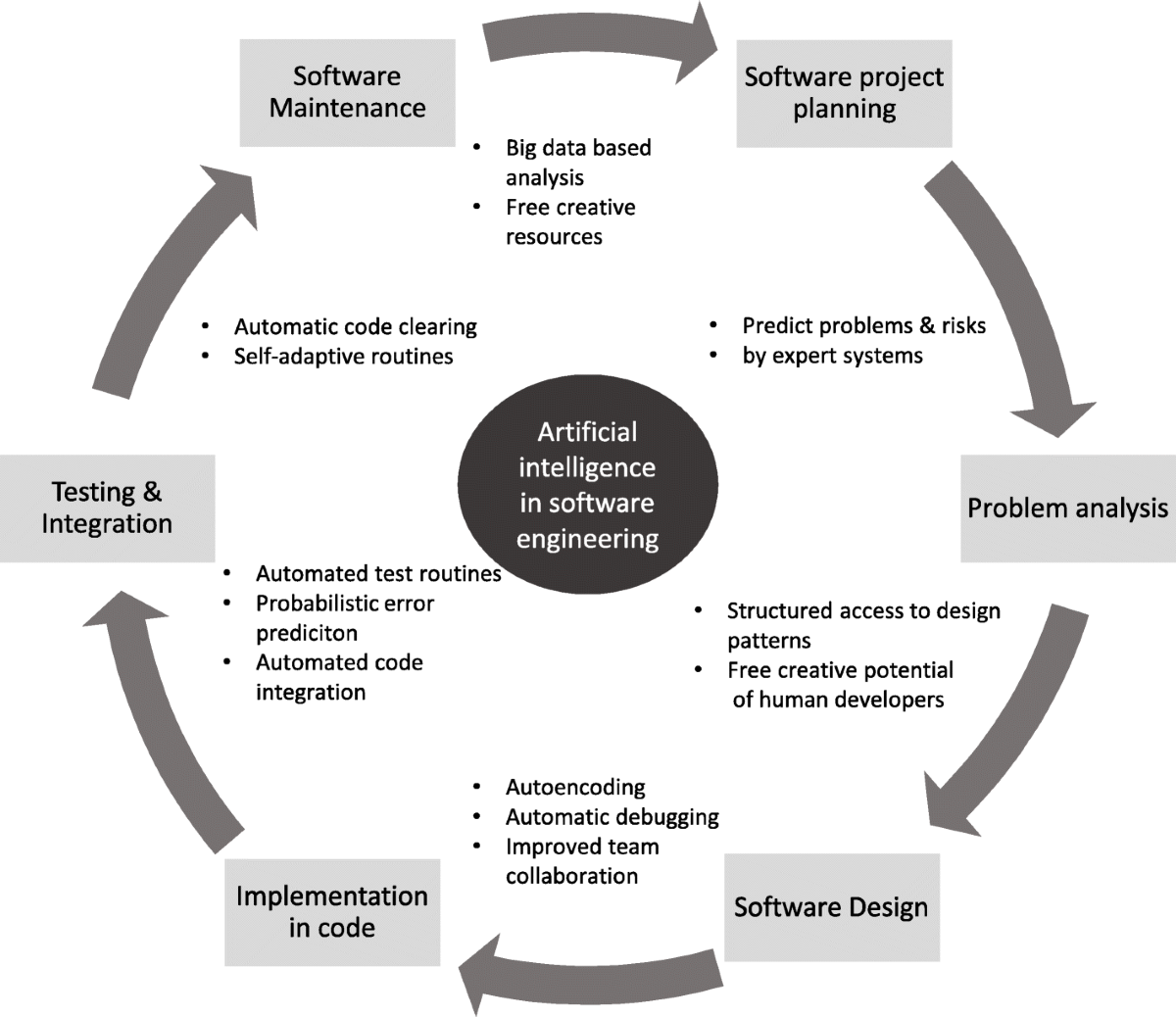All Categories
Featured
Table of Contents
- – Rumored Buzz on Practical Deep Learning For Co...
- – What Does Professional Ml Engineer Certificati...
- – See This Report about What Is A Machine Learn...
- – Getting My Computational Machine Learning For...
- – The Facts About Should I Learn Data Science ...
- – Machine Learning Course Fundamentals Explained
- – Machine Learning In A Nutshell For Software ...
Some individuals assume that that's cheating. Well, that's my whole job. If somebody else did it, I'm going to utilize what that individual did. The lesson is placing that aside. I'm compeling myself to believe via the possible solutions. It's more concerning consuming the material and attempting to use those concepts and less concerning locating a library that does the job or searching for somebody else that coded it.
Dig a little bit deeper in the mathematics at the beginning, simply so I can construct that structure. Santiago: Lastly, lesson number seven. This is a quote. It says "You need to understand every detail of a formula if you desire to utilize it." And then I state, "I assume this is bullshit advice." I do not think that you have to recognize the nuts and bolts of every formula before you utilize it.
I have actually been utilizing semantic networks for the longest time. I do have a feeling of how the gradient descent works. I can not discuss it to you right currently. I would have to go and inspect back to in fact obtain a much better instinct. That does not suggest that I can not address points making use of neural networks? (29:05) Santiago: Trying to compel individuals to think "Well, you're not going to achieve success unless you can clarify every detail of how this functions." It returns to our sorting instance I believe that's simply bullshit guidance.
As an engineer, I have actually worked on several, several systems and I have actually made use of lots of, numerous things that I do not comprehend the nuts and screws of just how it works, despite the fact that I comprehend the impact that they have. That's the final lesson on that particular thread. Alexey: The amusing point is when I think of all these collections like Scikit-Learn the algorithms they utilize inside to implement, for example, logistic regression or another thing, are not the exact same as the algorithms we examine in maker learning courses.
Rumored Buzz on Practical Deep Learning For Coders - Fast.ai
Also if we tried to find out to obtain all these essentials of device learning, at the end, the algorithms that these collections make use of are different. Santiago: Yeah, definitely. I assume we require a lot more materialism in the sector.

I typically speak to those that desire to work in the market that desire to have their impact there. I do not attempt to talk regarding that since I do not understand.
Right there outside, in the sector, pragmatism goes a long method for certain. (32:13) Alexey: We had a remark that said "Feels even more like motivational speech than talking about transitioning." So possibly we must switch over. (32:40) Santiago: There you go, yeah. (32:48) Alexey: It is an excellent inspirational speech.
What Does Professional Ml Engineer Certification - Learn Do?
One of the points I desired to ask you. Initially, allow's cover a pair of things. Alexey: Let's begin with core tools and frameworks that you require to learn to actually transition.
I understand Java. I know exactly how to use Git. Maybe I know Docker.
What are the core devices and structures that I require to find out to do this? (33:10) Santiago: Yeah, definitely. Great concern. I think, top, you need to start finding out a little of Python. Given that you already know Java, I don't think it's mosting likely to be a significant change for you.
Not due to the fact that Python is the exact same as Java, however in a week, you're gon na get a great deal of the distinctions there. You're gon na have the ability to make some progress. That's leading. (33:47) Santiago: After that you get specific core tools that are going to be used throughout your entire occupation.
See This Report about What Is A Machine Learning Engineer (Ml Engineer)?
That's a library on Pandas for information adjustment. And Matplotlib and Seaborn and Plotly. Those 3, or one of those 3, for charting and displaying graphics. You obtain SciKit Learn for the collection of device learning algorithms. Those are devices that you're mosting likely to need to be making use of. I do not recommend just going and discovering them unexpectedly.
We can speak about certain programs later. Take one of those courses that are going to begin presenting you to some problems and to some core concepts of maker knowing. Santiago: There is a training course in Kaggle which is an intro. I do not bear in mind the name, but if you go to Kaggle, they have tutorials there free of cost.
What's excellent about it is that the only requirement for you is to understand Python. They're going to offer a problem and inform you how to use decision trees to solve that details issue. I assume that process is very effective, because you go from no device discovering background, to understanding what the trouble is and why you can not fix it with what you understand right currently, which is straight software program design practices.
Getting My Computational Machine Learning For Scientists & Engineers To Work
On the other hand, ML engineers concentrate on structure and releasing machine knowing models. They concentrate on training versions with information to make predictions or automate tasks. While there is overlap, AI designers handle even more diverse AI applications, while ML designers have a narrower focus on artificial intelligence algorithms and their useful implementation.

Equipment understanding engineers focus on developing and deploying maker understanding models into manufacturing systems. On the other hand, data scientists have a more comprehensive role that consists of information collection, cleansing, expedition, and building designs.
As organizations progressively take on AI and machine learning technologies, the need for experienced experts expands. Maker learning designers function on cutting-edge tasks, contribute to development, and have competitive incomes.
ML is essentially various from standard software application development as it focuses on teaching computer systems to discover from data, instead of programs specific regulations that are executed systematically. Uncertainty of end results: You are possibly made use of to creating code with foreseeable outcomes, whether your function runs when or a thousand times. In ML, however, the end results are much less specific.

Pre-training and fine-tuning: Just how these models are educated on huge datasets and after that fine-tuned for details jobs. Applications of LLMs: Such as message generation, belief analysis and info search and retrieval. Documents like "Focus is All You Need" by Vaswani et al., which introduced transformers. On-line tutorials and courses concentrating on NLP and transformers, such as the Hugging Face course on transformers.
The Facts About Should I Learn Data Science As A Software Engineer? Revealed
The capacity to manage codebases, combine adjustments, and fix conflicts is equally as vital in ML development as it remains in conventional software program tasks. The abilities developed in debugging and screening software application applications are extremely transferable. While the context might transform from debugging application reasoning to determining problems in information processing or design training the underlying principles of systematic examination, theory screening, and iterative refinement are the very same.
Maker learning, at its core, is heavily reliant on statistics and possibility concept. These are essential for understanding just how formulas pick up from information, make predictions, and review their efficiency. You ought to consider ending up being comfortable with principles like analytical value, circulations, hypothesis screening, and Bayesian reasoning in order to layout and translate versions properly.
For those thinking about LLMs, an extensive understanding of deep discovering architectures is useful. This consists of not only the mechanics of semantic networks however also the design of specific designs for different usage cases, like CNNs (Convolutional Neural Networks) for photo handling and RNNs (Recurrent Neural Networks) and transformers for sequential data and all-natural language handling.
You should understand these problems and find out strategies for identifying, mitigating, and interacting about prejudice in ML models. This includes the potential influence of automated choices and the ethical implications. Lots of models, specifically LLMs, require substantial computational sources that are frequently provided by cloud systems like AWS, Google Cloud, and Azure.
Structure these skills will certainly not just promote a successful transition into ML but also guarantee that programmers can add efficiently and sensibly to the innovation of this vibrant field. Theory is vital, but absolutely nothing beats hands-on experience. Beginning servicing jobs that enable you to apply what you have actually learned in a sensible context.
Develop your jobs: Start with straightforward applications, such as a chatbot or a text summarization tool, and slowly raise complexity. The field of ML and LLMs is rapidly evolving, with brand-new breakthroughs and modern technologies arising consistently.
Machine Learning Course Fundamentals Explained
Contribute to open-source jobs or create blog messages about your understanding journey and projects. As you acquire competence, begin looking for possibilities to include ML and LLMs right into your job, or look for new roles focused on these innovations.

Prospective use instances in interactive software application, such as referral systems and automated decision-making. Comprehending uncertainty, standard statistical steps, and probability distributions. Vectors, matrices, and their function in ML formulas. Mistake reduction methods and gradient descent explained just. Terms like version, dataset, functions, labels, training, reasoning, and recognition. Data collection, preprocessing techniques, design training, assessment procedures, and release factors to consider.
Decision Trees and Random Forests: Instinctive and interpretable models. Assistance Vector Machines: Maximum margin category. Matching issue kinds with proper designs. Balancing efficiency and complexity. Basic structure of neural networks: nerve cells, layers, activation features. Layered calculation and forward propagation. Feedforward Networks, Convolutional Neural Networks (CNNs), Reoccurring Neural Networks (RNNs). Picture recognition, series prediction, and time-series evaluation.
Continuous Integration/Continuous Deployment (CI/CD) for ML operations. Version monitoring, versioning, and performance monitoring. Identifying and resolving modifications in model performance over time.
Machine Learning In A Nutshell For Software Engineers for Beginners

You'll be presented to three of the most pertinent elements of the AI/ML technique; managed learning, neural networks, and deep knowing. You'll realize the distinctions in between traditional programming and maker learning by hands-on development in monitored knowing prior to developing out complicated dispersed applications with neural networks.
This program offers as an overview to equipment lear ... Program Extra.
Table of Contents
- – Rumored Buzz on Practical Deep Learning For Co...
- – What Does Professional Ml Engineer Certificati...
- – See This Report about What Is A Machine Learn...
- – Getting My Computational Machine Learning For...
- – The Facts About Should I Learn Data Science ...
- – Machine Learning Course Fundamentals Explained
- – Machine Learning In A Nutshell For Software ...
Latest Posts
9 Software Engineer Interview Questions You Should Be Ready For
How To Prepare For An Engineering Manager Interview – The Best Strategy
The Best Programming Books For Coding Interview Prep
More
Latest Posts
9 Software Engineer Interview Questions You Should Be Ready For
How To Prepare For An Engineering Manager Interview – The Best Strategy
The Best Programming Books For Coding Interview Prep